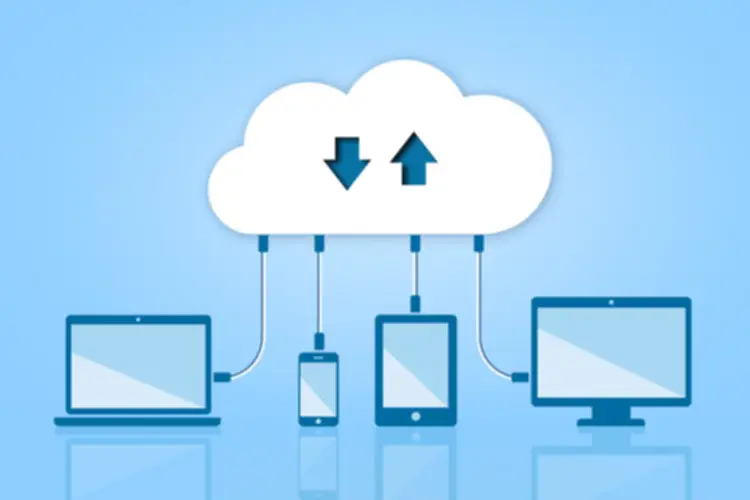Best AI-Powered Startup Name Generator in 2024 + Free Logo

The AI just simply upped our game and saved us time at the same time. I built my first Internet company back before there were cloud services. Trust me when I say that something like AWS is a vast and amazing game changer compared to building out server infrastructure on your own, especially for founders working on a startup’s budget. All you need to do is enter your credit card digits, read some documentation, and start writing code. AWS Bedrock is an AI toolbox, and it’s getting loaded up with a few new power tools from Stability AI. Let’s talk about the toolbox first, and then we’ll look at the new power tools developers can reach for when building applications.
Stay at the forefront with Wi-Fi 6E network solutions for ultra-fast connectivity. Effortlessly connect your devices and experience smooth, lag-free online gaming and streaming. AI-powered handheld gaming with stunning visuals and ultra-smooth gameplay, anytime, anywhere. This is powerful for developers because they don’t have to implement those models. They just have to learn the protocols for talking to them and then use them, paying as they go.
Artificial Intelligence Name Generator
As your faceless YouTube channel grows, it’s essential to explore the various monetization opportunities available to transform your passion into a profitable venture. While many creators focus solely on ad revenue, diversifying your income streams can lead to greater financial stability and long-term success. Let’s dive into the basic and advanced monetization strategies you can employ to maximize your earnings. Holywater believes My Drama stands out among the increasingly crowded market due to its robust library of IP. Thanks to My Passion’s thousands of books already published on the reading app, My Drama has a wealth of content to adapt into films. Plus, My Passion has an established fanbase that will likely be eager to see their favorite characters come to life.
Moreover, maintaining privacy in an increasingly digital world provides a sense of security and control over one’s online presence. Namify enables you to refine your brand identity with precision using its advanced AI filters. It tailors suggestions based on your preferred tone, target audience, style, etc. With this, you can witness the magic unfold as Namify crafts names that resonate with the uniqueness of your tech company. In the dynamic realm of tech innovation, Namify uses AI capabilities to effortlessly generate kickass names for your tech company. Now, you can explore the AI power of Namify to redefine your brand identity.
Since its launch in April, My Drama has rapidly gained traction, boasting 1 million users and $3 million in revenue. Holywater has a strong track record with its products, generating $90 million in annual recurring revenue (ARR) across all its offerings. Workforce Index research shows that clear permission and guidance is the essential first step to foster AI adoption. Slack’s Workforce Index research shows that leader urgency to implement AI has increased 7x over the last year. Employees who are using AI are seeing a boost to productivity and overall workplace satisfaction. And yet the majority of desk workers — more than two-thirds — have still never tried AI at work.
Remember, the key is to communicate the purpose of your bot without losing sight of the underlying brand personality. When leveraging a chatbot for brand communications, it is important to remember that your chatbot name ideally should reflect your brand’s identity. On the other hand, when building a chatbot for a beauty platform such as Sephora, your target customers are those who relate to fashion, makeup, beauty, etc.
Claude is an AI assistant created by Anthropic, designed to handle a wide range of tasks from writing to analysis. For entrepreneurs, it’s like having a skilled collaborator available 24/7. Claude is skilled in copywriting, and has won over many entrepreneurs who are fed up of ChatGPTisms. Fathom is an AI note-taker that’s becoming a must-have for entrepreneurs who spend a lot of time in meetings.
The Campfire Circle Names The Top 3 Companies Leveraging AI to Do Cool Things – Markets Insider
The Campfire Circle Names The Top 3 Companies Leveraging AI to Do Cool Things.
Posted: Mon, 02 Sep 2024 14:08:30 GMT [source]
I hope this list of 133+ best AI names for businesses and bots in 2023 helps you come up with some creative ideas for your own AI-related project. Namelix generates short, branded names that are relevant to your business idea. When you save a name, the algorithm learns your preferences and gives you better recommendations over time. “SynthGenius” is a name that combines “synth,” short for synthetic, and “genius” to imply a high level of intellectual capability. This name evokes the image of an AI-powered mind that can process complex information and provide excellent solutions.
These names not only sound great, but also have a strong connection to the world of AI. They are catchy and memorable, making them excellent choices for your project or chatbot. A fusion of intelligence and technology, IntelliTech is a great name for an AI project that showcases the advanced capabilities of artificial intelligence. VirtuMind blends “virtual” and “mind,” conveying the idea of an AI with a virtual presence and a powerful intellect.
It conveys a chatbot that is highly knowledgeable and capable of delivering top-notch responses. These names incorporate elements of the artificial intelligence world and convey a sense of greatness and intelligence. Choose one that resonates with your project’s goals and personality.
Namify offers some of the most unique and catchy startup name ideas
With the new app, users can have more personalized conversations with the characters. Further down the line, they’ll even be able to create their own characters, which is Character.AI’s specialty. Here are six AI tools that can help you build a standout personal brand without breaking the bank or eating up all your time. You need to respect the fine line between unique and difficult, quirky and obvious. For instance, a number of healthcare practices use chatbots to disseminate information about key health concerns such as cancers.

Develop a deep understanding of your target audience’s needs, preferences, and pain points, and create content that addresses these factors directly. By establishing a clear niche and catering to a specific audience, you’ll be better positioned to build a loyal following and create content that truly resonates. By studying these successful channels, you can draw valuable insights and inspiration for your own content creating journey. Adapt and apply these lessons to your own channel, and you’ll be well on your way to building a following and creating impactful content.
As AI technology continues to evolve, the capabilities of these generators will only become more sophisticated, making them an indispensable resource for anyone in need of innovative naming solutions. Whether you’re embarking on a new business venture, crafting worlds in a novel, or developing characters for a game, an AI Name Generator can be the ally you need to find the perfect name. The generator then uses these inputs to produce a list of potential names that blend relevance with creativity. This tool is particularly useful for those looking to name their AI projects, products, or characters in a way that conveys intelligence, technological sophistication, or futuristic appeal. These generators harness the power of AI to produce a plethora of unique and catchy names, tailored to the specific nuances and requirements of a brand.
AI Nexus is an artificial intelligence platform designed to connect and integrate various AI systems, allowing for seamless collaboration and knowledge-sharing. With its intuitive interface and advanced intelligence, AI Nexus is a powerful tool for managing and leveraging multiple AI platforms. ArtificialGeni combines “artificial” and “geni” to create a name that implies a chatbot with artificial intelligence comparable to that of a genius. It suggests an AI system that is highly intelligent, capable, and resourceful. As the name suggests, VirtuBot conveys the idea of a virtuous or excellent AI entity.
Catchy chatbot names
To make your bot name catchy, think about using words that represent your core values. But don’t try to fool your visitors into believing that they’re speaking to a human agent. When your chatbot has a name of a person, it should introduce itself as a bot when greeting the potential client. Do you remember the struggle of finding the right name or designing the logo for your business? It’s about to happen again, but this time, you can use what your company already has to help you out. It’s less confusing for the website visitor to know from the start that they are chatting to a bot and not a representative.
Brands like Jiffy Lube, Aldo Shoes, and Kal Tire all use this approach. In this blog post, we’ll discuss 133+ of the best AI names for businesses and bots in 2023 that will help you stand out. Meaning “a connection or series of connections,” Nexus is an excellent name for an AI project that aims to connect disparate pieces of information or integrate different systems. It evokes the idea of a central intelligence that bridges gaps and enables seamless interactions.
When using the brand name generator, add keywords that imitate a sound or emotion to make your business name more memorable and impactful. Companies like Bing, Asana, and Zoom have all used this strategy to name their brands. To make your name stand out, consider adding a prefix, suffix, or verb to the beginning or end of your word. Adding elements like “un,” “er,” and “ify” can help you create unique names that still reflect your brand. Include the type of products or services you offer, as well as your market positioning and any other details that can help our AI form a better understanding of your company. Next, choose the tone for your description from a dropdown menu of options like friendly, professional, or edgy.
At the top of the screen is a meter measuring your ranking on Hayden’s trust meter. The company explains this gamification tactic aims to increase engagement on the platform. Teams with high degrees of interpersonal trust are the teams that feel the safest and most supported to try new technologies, including AI. Desk workers who feel trusted by their employers are 94% more likely to have tried AI for work-related tasks. To realize the full potential of AI, companies need to create a safe space to experiment. It also sets teams up to learn and share the most helpful and creative AI use cases for their roles and functions.
Give Claude examples of your work and specify which words to avoid, to train it to write in a way that authentically represents your brand. This design platform keeps getting better, and Canva’s AI upgrades have turned it into a branding powerhouse. Using its Magic Studio, you can create custom assets such as LinkedIn banners, presentations and Instagram post drafts straight from your ideas, simply by describing them.
OpenAI Names Political Veteran Chris Lehane as Head of Global Policy – The New York Times
OpenAI Names Political Veteran Chris Lehane as Head of Global Policy.
Posted: Fri, 30 Aug 2024 22:46:07 GMT [source]
A fusion of “synthetic” and “mind,” SynthMind is a powerful AI name that suggests intelligence generated by technology. It embodies the cutting-edge nature of AI and conveys the idea of a highly advanced https://chat.openai.com/ system capable of cognitive functions and learning. Choose one of these quirky AI names, and you’ll have a unique and memorable identity for your artificial intelligence project or chatbot.
tips for choosing the perfect tech company name
The name you select will be a significant factor in shaping your company’s perception. So, here’s a list of 7 tips to guide you in selecting a tech name that aligns with your vision and leaves a lasting impression. With this tech company name generator, you can find some of the most intuitive and interesting names for your robust tech business.
This technique has been used by some of the world’s most successful companies, like Dropbox, YouTube, FedEx, and Netflix. After specifying the type of name, provide any details you want the names to include. For example, you could say “Male, Latin origin, means ‘strength’, starts with the letter P” for a baby name. Or “Goblin name, Tolkein influence, evil sounding, fire-themed” for a fantasy name. Derived from the Latin word “nexus,” meaning connection, Nexus is an excellent name for an AI that has the ability to bring people together and create meaningful connections. Short for “synthetic,” this name captures the artificial nature of AI while also conveying its ability to mimic human intelligence.

These channels showcase the power of compelling content and unique presentation styles in capturing and retaining an audience’s attention. You can foun additiona information about ai customer service and artificial intelligence and NLP. It provides verified facts that you can use as hooks for social media posts or quotes in interviews. This tool helps you stay current and knowledgeable in your field without spending hours on research (or fact-checking ChatGPT’s responses).
The generated text combines both the model’s learned information and its understanding of the input. Once you have brainstormed some business name options, it’s time to refine them. You can do this by confirming whether the business name is also available as a website domain name. You should also do a Google search for the business name to see if there are any conflicting results. You can create the name for your company for free using a tech name generator. All you have to do is enter the keyword(s) of your liking, and the technology behind the name generator will take care of the rest.
So, get creative and think outside the box to find an unforgettable name that truly represents the artificial intelligence you have developed. The CogniBot is an artificial intelligence solution that combines Chat GPT the power of cognitive computing with advanced chatbot technology. With its top-notch intelligence and mind-like capabilities, this AI bot is designed to provide intelligent and personalized responses.
A name that signifies connection and integration, Nexus is a top-notch AI name for a project that brings together multiple technologies and intelligences. Finally, financial firms often rely on third-party AI and data providers, which have their own cybersecurity vulnerabilities. While the CrowdStrike catastrophe was not a cyberattack, the calamity reminds us that technology is a double-edged sword. But if we can track their fluctuations and their movements at home, we could have a very different style of medical practice where patients are being monitored nearly continuously.
You’ll need a business name to submit a Form SS-4 to receive an employer identification number (EIN) and to start operating your company. A brandable name gives you flexibility to expand your offerings over time under one brand umbrella. It doesn’t get lost in a sea of similar sounding names and allows you to own the name legally. Amidst the murmur of introductions, one name rings clear and stays with you even after the party is over. Revefi connects to a company’s data stores and databases (e.g. Snowflake, Databricks and so on) and attempts to automatically detect and troubleshoot data-related issues. Your decision on when and how to name your AI technology will be influenced by many factors.
CogniBot is a great name that conveys the idea of artificial intelligence and cognitive abilities. It suggests that your AI tech has advanced cognitive capabilities, making it a top-notch choice. One of the most crucial aspects of creating engaging faceless YouTube videos is crafting compelling scripts. AI-powered scriptwriting tools like Conversion.ai and Jarvis can help you generate ideas, outline your content, and even write entire scripts based on your input. These tools utilize advanced language models to produce high-quality, original content that aligns with your niche and target audience. Additionally, AI voiceover tools such as Wavenet and Notevibes offer realistic, customizable voices in multiple languages, allowing you to narrate your videos without revealing your own voice.
Handle conversations, manage tickets, and resolve issues quickly to improve your CSAT. For example, Diminutives, our nickname tool, creates dozens or even hundreds of nicknames based on the letters and sounds of your full name. Meanwhile, the Generative Names tool uses an algorithm names for my ai to create thousands of non-existent names, perfect for that fantasy novel or sci-fi screenplay you’re writing. Interested in finding popular first names from your country of origin? Our First Name Generator will list out thousands of names and let you know from where they came.
It eliminates the often tedious and time-consuming task of brainstorming names by providing a random selection at the user’s fingertips. The generator is equipped to produce a diverse set of names that can fit various types of AI personalities and functions, making it a versatile resource for a multitude of creative endeavors. A business name generator is a tool that helps you create the perfect name for your business or product using artificial intelligence (AI). All you need to do is enter a short description of your brand, target market, and product offering, and let the AI do the rest. With just one click, you’ll have a list of potential brand name ideas in seconds. Looking for a baby name, your new novel’s protagonist, a unique name for your business, or even a pet name?
AI name generators work by employing machine learning models that have been trained on large datasets containing names from diverse sources. These models analyze the structure, phonetics, and cultural associations of names to understand how different elements combine to create appealing and meaningful names. When a user inputs specific criteria, the AI applies these insights to generate a list of names that match the user’s requirements. Advanced generators may also allow for customization, enabling users to fine-tune the results by adjusting parameters such as uniqueness, length, and specific starting or ending sounds.
That’s exactly why you need to have a clear understanding of your business’s mission, values, products, services and target audience. Your business name should reflect your identity and resonate with your customers. A business name can be different from a trade name, but it should still be succinct, direct and memorable. It should also provide the public with some insight into what your company does or the products it provides. Use this powerful tool to create memorable, catchy slogans that capture the essence of your brand and leave a lasting impression. Choosing the right name for your tech company is more than just a creative exercise; it’s a critical aspect of your brand’s identity.
- My Drama is a new short series app with more than 30 shows, with a majority of them following a soap opera format in order to hook viewers.
- It conveys the idea of a central hub where information is synthesized and processed, making it an ideal choice for a sophisticated AI platform.
- Remember, the key is to communicate the purpose of your bot without losing sight of the underlying brand personality.
Watch these videos by Ali Mirza (Growth Marketer & Digital Entrepreneur), Timoté Chanut (Entrepreneur and Tech Educator) and Marty Englander (Entrepreneur & Web Developer) to know why. The exact contents of X’s (now permanent) undertaking with the DPC have not been made public, but it’s assumed the agreement limits how it can use people’s data. To stand out from your competitors, you need a domain name that is brandable, contextual, and meaningful. One of the best ways to do this is to register your domain name on a new domain extension.
This could include specifying a starting letter, gender, theme, or even the level of uniqueness. The platform then processes these inputs through its AI algorithms to generate a list of names that match the specified criteria. This process not only offers a personalized naming experience but also saves time and inspires creativity among users looking for the perfect name.
Free AI Business Name Generator
From there, feel free to experiment by using acronyms, experimenting with mash-ups and finding inspiration from pop culture, books or social media trends. With our business name generator, you can take some of the guesswork out of the brainstorming process and develop a concrete, focused list of business name options based on your industry and jurisdiction. Ultimately, the business name you choose will become an integral part of your brand’s identity. Take the time to brainstorm a good business name and make sure it encapsulates your mission, values and aspirations.
- Share teasers, behind-the-scenes snippets, and engage in conversations with your followers on platforms like Twitter, Instagram, and TikTok to drive traffic back to your channel.
- NexusSynth combines the words “nexus” and “synth” to create a name that implies a network of interconnected AI systems working together harmoniously.
- Whether for professional tech projects or personal exploration into advanced computing, Generator Fun provides a seamless and engaging experience for discovering names that embody technological brilliance.
- I hope this list of 133+ best AI names for businesses and bots in 2023 helps you come up with some creative ideas for your own AI-related project.
- Holywater believes My Drama stands out among the increasingly crowded market due to its robust library of IP.
As a faceless YouTube creator, leveraging the right tools and resources can significantly streamline your content creation process and elevate the quality of your videos. If you’re looking to come up with a unique tech company name, you could start by experimenting with industry terms relevant to your business. Try a combination of words fused together to create your own name or make use of a technology company name generator for ideas. In addition to uniqueness, keep the name of your company short, easy to remember, and professional. Yes, AI Name Generators are incredibly flexible and can create names for virtually any industry or genre.
If the former, there may be better opportunities for assigning a name to your AI, whereas the latter might be an opportune moment to consider branding your AI. Google launched “Bard” as a brand when the technology was still in beta mode. It thus accrued brand attributes of not being as powerful as competitors. While still considered in beta and to be an “experiment,” the initial perception tied to the Bard name and brand will take time to shake. Google could have avoided these early negative associations if they had launched their beta mode as “Google AI” and launched the Bard name and brand when it was more fully functional. Incorporating “AI” into your technology or company name can be done in a few different ways.

Forbes Advisor’s Business Name Generator has GPT integration, which allows users to generate unique and creative business names within seconds. The names suggested by Namify’s tech company name generator are all available on new domain extensions and free from any copyright or legal issues. Namify redefines naming conventions with its cutting-edge AI technology.
Brainstorm a wide range of creative business names until you find the perfect one that encapsulates your unique brand identity. Most often than not, the tech company names you shortlist would have already been taken. Using a .tech domain is not only a stand out from the rest, but also beneficial from an SEO point of view.
With the right name, your AI project or chatbot can make a lasting impression on users and showcase its top-notch abilities. You can use an AI business name generator to find techy, unique, innovative, and memorable brand names that can make your AI startup stand out and make a mark among its competitors. This AI business name generator tries to understand the essence of what the user is searching for and accordingly suggests names that are meaningful and usable.
Now that we’ve explored chatbot nomenclature a bit let’s move on to a fun exercise. There are different ways to play around with words to create catchy names. For instance, you can combine two words together to form a new word. A good rule of thumb is not to make the name scary or name it by something that the potential client could have bad associations with. You should also make sure that the name is not vulgar in any way and does not touch on sensitive subjects, such as politics, religious beliefs, etc. Make it fit your brand and make it helpful instead of giving visitors a bad taste that might stick long-term.

Ultimately, the best faceless niche is one that aligns with your strengths and provides value to your audience. Another way to engage your audience is by leveraging social media platforms to extend your reach and foster a sense of community. Share behind-the-scenes glimpses, teasers, and exclusive content on platforms like Twitter, Instagram, and Facebook to keep your audience excited and invested in your channel.
At Kommunicate, we are envisioning a world-beating customer support solution to empower the new era of customer support. We would love to have you onboard to have a first-hand experience of Kommunicate. Below is a list of some super cool bot names that we have come up with.
After that, Magic Write generates text in your unique tone, and Magic Switch instantly reformats designs for different platforms. Every conversation you have likely contains nuggets of wisdom that could be turned into content with the right prompt. Fathom captures these moments, giving you an abundance of material for blogs, social media updates, or newsletter content.
Use high-quality images, graphics, and animations in your videos, and maintain a consistent visual style and branding throughout your content. Online learning platforms like Udemy and Skillshare also offer courses specifically tailored to YouTube content creation, taught by experienced creators who share their insights and techniques. With your script and voiceover ready, it’s time to bring your faceless video to life through the power of AI-assisted video creation and editing. AI tools can help you generate visually stunning videos by automatically selecting relevant footage, applying transitions, and synchronizing the visuals with your voiceover. Looka helps you create a uniform visual identity across all platforms. This consistency signals credibility, professionalism and attention to detail, getting you above everyone who hasn’t considered design.










